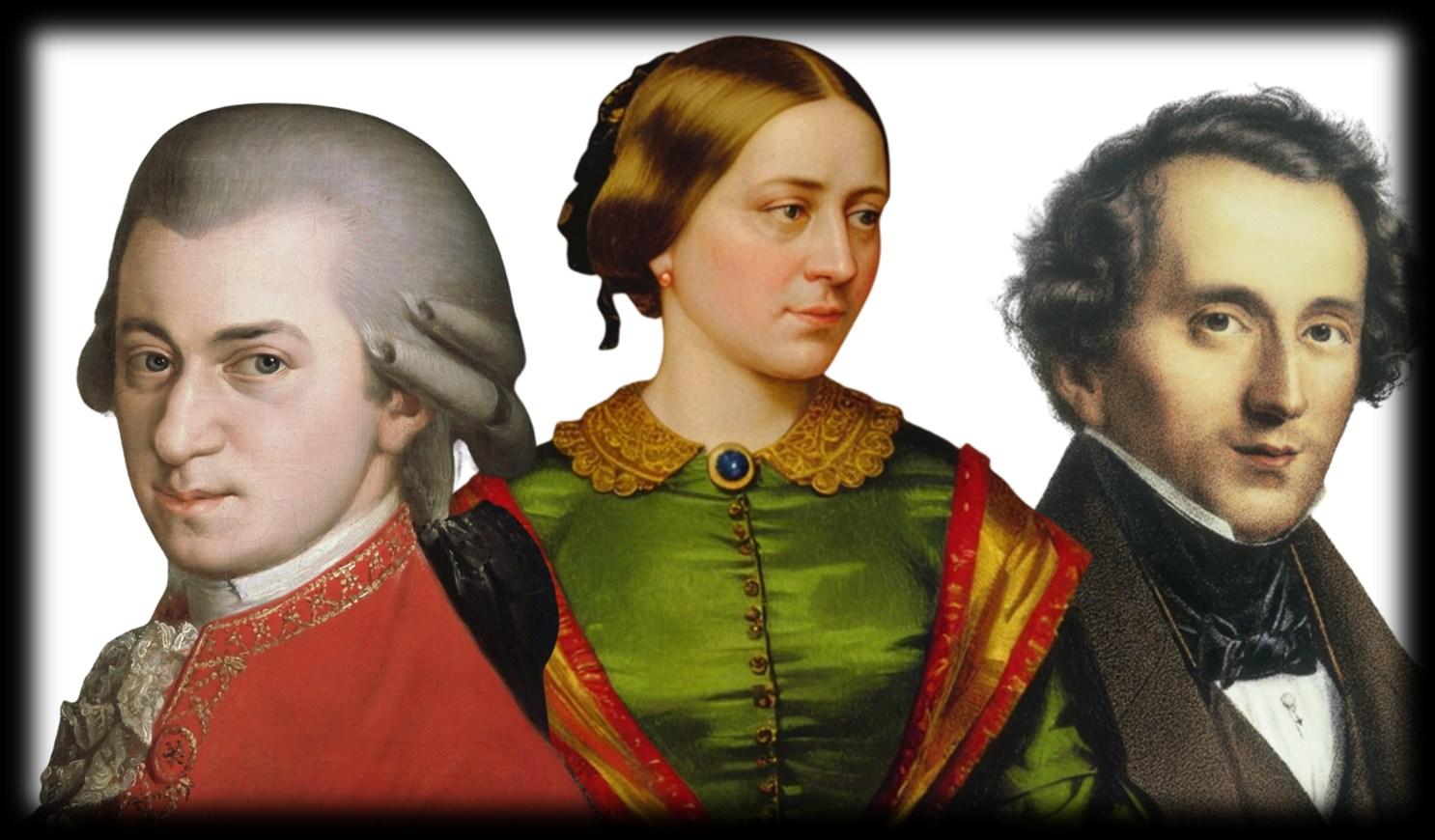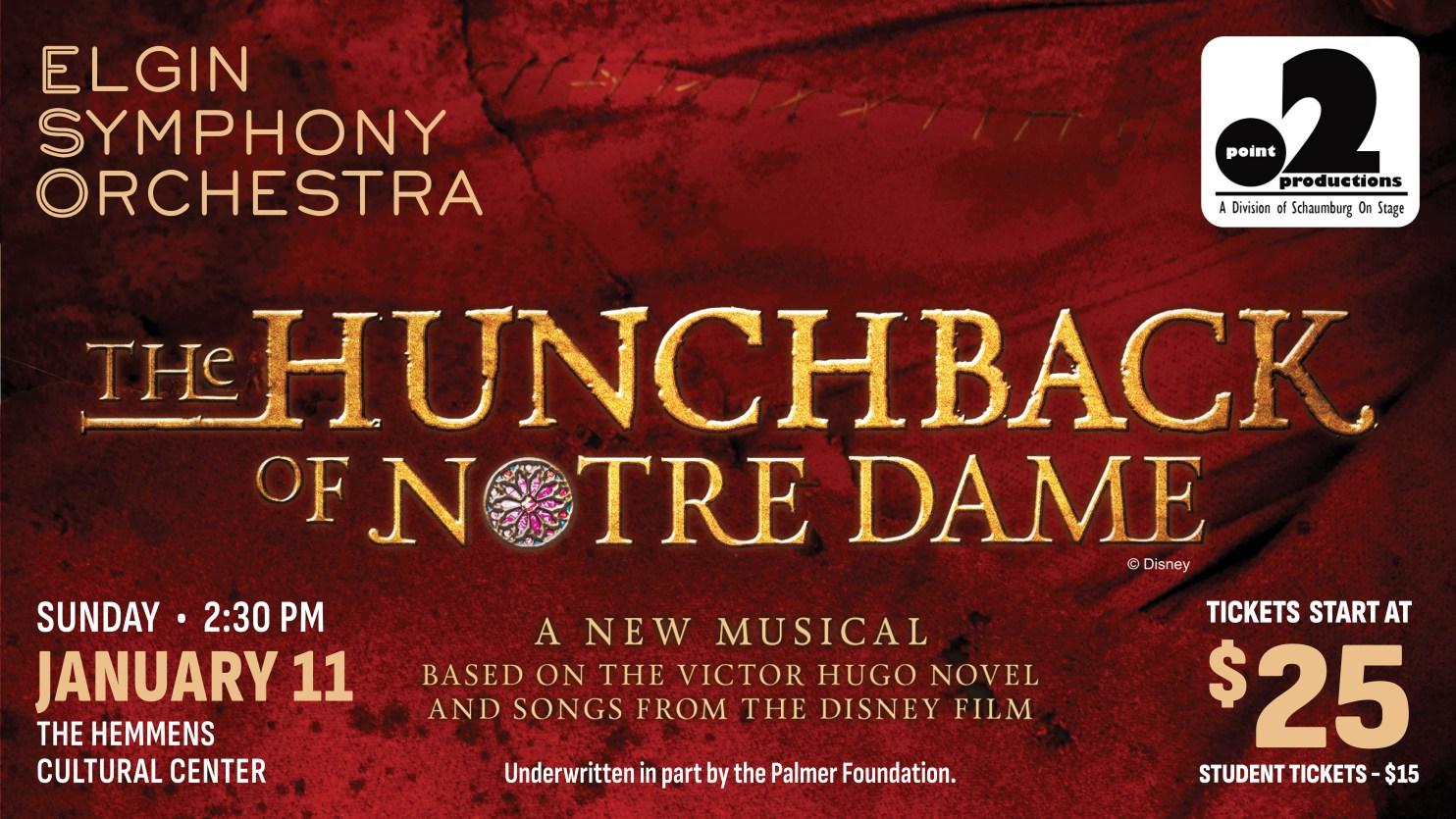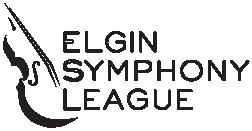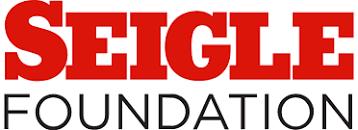

Mozart & Mendelssohn
Saturday, November 8, 2025 at 7:30 PM
Sunday, November 9, 2025 at 2:30 PM Hemmens Cultural Center, Elgin, IL
Chad Goodman, conductor Greg Flint, horn



Saturday, November 8, 2025 at 7:30 PM
Sunday, November 9, 2025 at 2:30 PM Hemmens Cultural Center, Elgin, IL
Chad Goodman, conductor Greg Flint, horn
MOZART
MOZART
C. SCHUMANN
orch. Benjamin de
Murashkin
MENDELSSOHN
Symphony No. 13 in F major, K. 112
Allegro
Andante
Menuetto
Molto allegro
Horn Concerto No. 4 in E-flat major, K. 495
Allegro maestoso
Romance: Andante cantabile
Rondo: Allegro vivace
Greg Flint, horn
~ Intermission ~
Three Romances, op. 22
Andante molto
Allegretto
Leidenschaftlich schnell
Symphony No. 4 in A major, op. 90, "Italian"
Allegro vivace
Andante con moto
Con moto moderato
Saltarello: Presto

Greg Flint has taught horn at the collegiate level for over thirtyfive years, holding positions at the University of WisconsinMilwaukee, Roosevelt University in Chicago, and DePaul University. As a soloist, clinician, and chamber musician he has performed and given master classes in Spain, Costa Rica, Brazil, Columbia, Taiwan, Japan and throughout the United States.
As an orchestral musician, he is principal horn of the Elgin Symphony, and has performed with the Chicago Symphony, Milwaukee Symphony, Lyric Opera of Chicago, Ravinia Festival Orchestra, Grant Park Symphony, Colorado Orchestra, Honolulu Symphony and the Key West Symphony. Recently Mr. Flint performed several seasons as a long-term replacement player with the Milwaukee Symphony. During the summer months, Greg is a member of the Santa Fe Opera Orchestra, and often performs at the Santa Fe Chamber Music Festival.
A strong advocate of contemporary music, Mr. Flint has had several solo compositions written for him, and performed numerous world premieres with such groups as Present Music, the Fulcrum Point New Music Project, the Contemporary Chamber Players, and on the Chamber Music Milwaukee, and Music from Almost Yesterday concert series.
His long-held position as first horn with the Chicago Jazz Orchestra has provided him opportunities to perform and record with such jazz luminaries as Clark Terry, Roy Hargrove, Nicholas Payton, Jon Faddis, Ernie Watts, and Frank Sinatra.

Chad Goodman has received widespread praise for thrilling conducting that combines “precision, agility and fervor” (N. Stanić Kovačevic, South Florida Classical Review) and for displaying the “pitch perfect combination of abandon and subtlety” (L. Budman, South Florida Classical Review)
The 2025/26 season marks Goodman’s 3rd season as Music Director of the Elgin Symphony Orchestra only the fifth leader in the orchestra’s prestigious seven-decade history. Concerts with the ESO include Beethoven’s Symphony No.5; Barber’s Violin Concerto with Geneva Lewis; Strauss’s Death and Transfiguration, coupled with Mussorgsky’s Pictures at an Exhibition, Brahms’ Symphony No. 3, and Fauré’s Requiem with the Elgin Master Chorale.
Goodman holds a Bachelor of Music degree from the Eastman School of Music and a Master of Music degree from San Francisco State University. His mentors include Michael Tilson Thomas and Alasdair Neale.

Violin I
Isabella Lippi
Concertmaster
Eleanor Bartsch* Associate Concertmaster
Gerald Loughney
Kate Carter
Eric Pidluski
Joseph Malmquist
Susan Carlson
Carol Dylan
Helen Kim Lee
Wendy Evans
Carmen Abelson
Jennifer Leckie
Violin II
Daniela Folker
Principal
Robbie Herbst* Assistant Principal
Caroline Slack
Maria Arrua
Susan Thorne
Steve Winkler
Cristina Buciu
Elizabeth Huffman
Kelvin Lin
Meg Lanfear*
Kathryn Siegel
*On Leave, 25/26 Season
+Season Substitute
Viola
Rebecca Swan
Principal
Loretta Gillespie
Assistant Principal
Josef Fischer+
Jason Butler
Erin Rafferty
Sava Velkoff
Susan Posner
Cello
Matthew Agnew
Principal
Nazar Dzhuryn
Assistant Principal
Kerena Fox
Robert Weber
Elizabeth Start
Sara Sitzer
Double Bass
Nicholas De Laurentis
Principal
Jeremy Attanaseo
Assistant Principal
Susan Sullivan
Grace Heintz
Jason Niehoff
Lauren Pierce+
General Manager
Eric Gaston-Falk
Stage Managers
David Goldman and
Eric Block
Flute
Jean Bishop
Principal
Scott Metlicka
Piccolo
Scott Metlicka
Oboe
Cameron Slaton
Principal
Joseph Claude
English Horn
Joseph Claude
Clarinet
Gene Collerd
Principal
Trevor O’Riordan
Bassoon
Vincent Disantis
Principal
Collin Anderson
French Horn
Greg Flint
Principal
Steven Replogle
Sharon Jones
Mary Buscanics-Jones
Trumpet
Ross Beacraft
Principal
Michael Brozick
David Gauger
Assistant Principal
Trombone
Reed Capshaw
Principal
Adam Moen
Bass Trombone
Mark Fry
Tuba
Charles Schuchat
Principal
Timpani
Robert Everson
Principal
Percussion
Brian Oriente
Principal
Michael Folker
Harp
Lillian Lau
Principal
Keyboard
Patrica Lee
Principal
Orchestra Librarian
Macauley Manzano
Orchestra Personnel Manager
Grace Heintz
EXTRA MUSICIANS
Violins
Laura Burns, Lisa Fako, Joanna Nerius, Nina Saito
Rika Seko, Alec Tonno, Sherri Zhang
Viola
Becky Coffman, Nick Munagian, Rebecca Miller
Flute
Maria Schwartz
Oboe
Sam Waring
Bassoon
William George
Written by - Craig Doolin
Symphony No. 13 in F major, K. 112
Wolfgang Amadeus Mozart (1756-91)
ESO last performed:
This weekend’s concerts mark the ESO’s first performances of this work.
When considering childhood compositions by important composers, one often has to take their immaturity into consideration. However, Mozart had no ordinary childhood. He was a precocious virtuoso on both the keyboard instruments and violin. Leopold Mozart, Wolfgang’s father and noted musician at the court of the Prince Archbishop of Salzburg, shuttled his son and daughter, Nannerl, across Europe. Performing for heads of state from London to the Vatican, the youngsters became well known in the courts of Europe.
Mozart’s earliest works date from his fourth year and consist of music for solo harpsichord or small chamber ensembles. In his eighth year, he began to compose for orchestra. By the time he was fifteen, he had completed nearly one hundred pieces – among them nearly twenty symphonies. It is not beyond the range of reasonable speculation that the early works were performed throughout Europe during Mozart’s childhood travels. It is also important to note that Mozart gained a vast knowledge of national and local musical styles during these journeys. Especially important is the strong Italian influence that would later permeate his operas and instrumental music alike.
Between two such Italian journeys, Mozart spent five months in Salzburg from March to August of 1771. Most of his time was spent composing a new opera for performance in Italy, but several sacred choral works also date from that summer. Immediately afterward, he traveled to Milan where he composed his Symphony No. 13. The minuet movement possibly dates from earlier.
In contrast to his mature style, with its elegant solos for woodwinds and horns, the Symphony No. 13 belongs more to the ensemble-oriented rococo style. Ornamentation, a chief trait of the rococo, is conspicuously absent. Opening without an introduction, a feature that would find its way into some of Mozart’s later
symphonies, the work begins with a festive allegro. An unusual feature is the triple meter, rarely found in the first movement of a symphony in the mature Classical style. However, the symphonic form that became a universal standard had not yet been codified. Mozart, along with Joseph Haydn and several less famous composers, was writing in an idiom that was being born at the time. The second movement, a leisurely andante for strings alone, is a quiet respite from the opening movement, and is cast in a simple two-part form. Mozart’s menuetto is a heavy-footed dance that is offset by a gentler trio section for strings alone. The boisterous allegro finale is permeated with a steady eighth-note pulse. Its bright F-major key shifts to several contrasting key areas throughout the movement. Of course, the major key returns to round off the work with Mozart’s characteristically sunny optimism.
ESO last performed:
January 1986; Robert Hanson, conductor; Dale Clevenger, horn
As a child, Mozart was well known as a violinist and keyboard prodigy, touring Europe while performing for every major crowned head on the continent. As he physically grew into his teenage years, he could no longer pass as a precocious child and was forced to settle down into a court position. As concertmaster of the court orchestra for the Prince Archbishop of Salzburg, he was able to explore the sounds of the orchestra firsthand. The position also allowed him to concentrate on his violin playing. Although he came to despise the job that he would eventually leave to seek his fortune in Vienna, the Salzburg years saw the composition of his earliest masterpieces.
Ignaz Leutgeb was a celebrated hornist and close friend of Mozart’s in Salzburg where he played in the brass section of the Archiepiscopal Court Orchestra. Moving to Vienna in 1777, Leutgeb opened a cheese shop with money he borrowed from Leopold Mozart, the composer’s father. When Wolfgang relocated to Vienna in 1781, Leutgeb was still in no position to repay the loan, but his excellent musicianship served him well as the dedicatee of the four
horn concertos the young Mozart composed over the next five years.
Mozart always held the highest regard for Leutgeb, as is evident in the chiding comments written in the manuscripts of the concerti. These taunting barbs, often accompanied by chirping or otherwise humorous sounds from the orchestra, must have been a distraction to the soloist, but they display an almost brotherly type of brusque humor shared only by two people who are the closest of friends. For example, the score of the D major concerto bears among its markings comments like, “how flat you play,” “what a bleating sheep’s trill,” and simply “ouch.”
The Fourth Concerto was composed in blue, red, green, and black ink as a further jab at the soloist. The work is much more compact than most solo concertos of the period, perhaps because of the difficulty of the solo part, played completely on valveless horn (valves were not invented for another fifty odd years).The first movement includes a surprising number of musical themes – a notable feature for such a short work. Scholars have noted that sections of the movement strongly resemble the overture to The Marriage of Figaro, composed only a month earlier.
The second movement is divided into three sections. Mozart exploits the horn’s unique ability to navigate wide melodic leaps while retaining a conjunct melodic line while displaying cantabile melodies and treacherous runs. The finale is an impressive rondo that hearkens back to the horn’s origin as a hunting instrument. Likewise, Mozart’s choice of 6/8 meter reflects its traditional association with the hunt. Throughout the work, Mozart’s jostling sense of humor never lets us forget the affinity he felt for one of the leading soloists of his day.
Three Romances, op. 22
Clara Wieck Schumann (1819-96) orch. Benjamin de Murashkin (b. 1981)
ESO last performed:
This weekend’s concerts mark the ESO’s first performances of this work.
Clara Wieck was the daughter of two of the most musical people in Germany. Her mother was a noted singer in Leipzig who
sang weekly at the Gewandhaus, the magnificent concert hall. Her father was Friedrich Wieck, one of the most important piano teachers of the nineteenth century. Of course, her husband was the composer Robert Schumann, who was a student of Herr Wieck.
The courtship of the young couple was scandalous in several ways. When they first met, Robert was 20, but Clara was only 12. His first mention of courtship was only two years later. Of course, Herr Wieck was upset, but his main complaint was that Clara was involved with a poor composer. As her father and teacher, he had grand plans for her to pursue a lucrative career as a concert pianist. After her father threatened to shoot Schumann, the couple applied to the court system to allow them to marry, since Clara was still a minor. Schumann sued and Wieck did not show. Instead he offered to settle for unreasonable terms that would result in Clara giving all of her professional income to her brothers. Even in the nineteenth century, when women had few rights, the court saw the arrangement as unfair and rejected Wieck’s proposal. After years of appeals and a defamation campaign against Clara by her own father, the court ruled for the couple. They married one day before her 21st birthday in 1840.
Despite their rocky beginnings, Clara and Robert were happily married for a time. They had eight children, but the marriage was complicated by Robert’s progressively debilitating mental illness. This culminated with a suicide attempt in 1854 and the subsequent institutionalization for the remaining two years of Robert’s life. After his death, she not only had to raise the children, but she considered it her duty to keep Robert’s music relevant through her appearances in concert. She became the most respected pianist in Germany and acted as a confidante and mentor to her friend Johannes Brahms, offering her opinion of his works in progress.
All the preceding history often overshadows Clara’s most enduring gift her compositions. Her first works appeared when she was only 11 years of age. Throughout her career, she provided important works to the repertoire of lieder, chamber music, and piano pieces. She composed two orchestral works: a scherzo composed in 1830 and a piano concerto (which was recently performed by the ESO in January 2022).
Her Three Romances were composed for Joseph Joachim, and he toured with the composer to perform the work across Germany. It is one of her final works and was composed just before
Robert entered the asylum. The orchestral version on this program was created by the Danish composer Benjamin de Muashkin. The work begins with an andante molto movement that has a strong Romani influence like many works of Brahms in the same period. The second movement is an allegretto in ABA form with a syncopated opening (A) and a darker central section (B). Marked leidenschaftlich schnell (passionately quick), the finale consists of piano ripples and a long-spun melody with occasional surprises.
Symphony No. 4 in A major, op. 90, “Italian”
Felix Mendelssohn (1809-47)
ESO last performed:
October 2000; Robert Hanson, conductor
Much attention is given to the remarkably young age at which Mozart composed his earliest works. This has overshadowed the equally amazing talents of the young Felix Mendelssohn. Mozart was forced to tour Europe as a young child, playing for kings, popes, and princes. Mendelssohn showed his talent at a similarly young age, so his banker father invested in the best music teachers available for Felix and his musically gifted sister Fanny (who also became a composer despite the social expectations of the time). As the young Felix composed, he regularly heard his music performed by a private orchestra that played in the Mendelssohn’s Berlin home every Sunday. This invaluable advantage allowed the composer to develop musical identity and adeptness for orchestration before his age reached double digits. Thirteen early “string symphonies” date from this period all written before he composed his first numbered symphony at the age of fifteen. Felix’s thirst for travel was nearly as great as his love of composition. In fact, he regularly chronicled his journeys in his works. Mendelssohn’s visit to the British Isles in 1829 resulted in the Hebrides Overture (Fingal’s Cave) and the “Scottish” Symphony. During a year and a half stay in Italy beginning in 1830, Mendelssohn started composing his Fourth Symphony. He completed the work when the London Philharmonic Society asked him for a new symphony to be performed in May of 1833. Although he was never quite satisfied with the final two movements, he allowed the symphony to be given several times in London. The work did not reach publication until
1851 four years after Mendelssohn’s untimely death at age 38. Since then, it has become his most frequently performed symphony. This sunny and delightful symphony reflects Mendelssohn’s impression of Italian life. The first movement, in sonata-allegro form, is a vigorous tour-de-force, especially in the intertwining themes of the development section. The introspective adagio, sketched in Naples, is noble and graceful with a hopeful middle section of great freshness. The third movement leaves behind the usual quick and lighthearted scherzo, which had become the third movement norm since Beethoven first used it three decades before, in favor of the reserved and dignified minuet of the Eighteenth Century. The finale is set in the guise of a saltarello an Italian dance characterized by leaping motions although it more closely resembles a tarantella, whose steps were prescribed as a folk cure for the bite of the tarantula.
©2025
Orpheus Music Prose & Craig Doolin www.orpheusnotes.com

S.E. Ainsworth Family Fund
OTTO Engineering, Inc
Willow Springs Foundation
John B. Sanfilippo & Son, Inc.
Illinois Arts Council
Pepper Family Foundation
Francis & Patricia Houlihan Foundation
Seigle Foundation
Barrington Area Community Foundation
Music Performance Trust Fund
Lyrasis
Wells Fargo Advisors
Ark Tehnologies, Inc
W.R. Meadows, Inc.
Grace Bersted Foundation, Bank of America, N.A., Trustee
Richard and Carol Leonard Foundation
U-46 Educational Foundation
Rick Floyd
Tyndale House Publishers
Florence B. Palmer & Cornelia A.
Palmer Foundation
Driskill Foundation
Elgin Symphony League
Shaw Family Fund At Taos Community Foundation
Wickstrom Auto Group
St. Charles Bank & Trust Company
Henn Pritchard Family Fund at The Dallas Foundation
Paul and Dottie Foundation of DuPage Foundation
Trinidad AguirreArmenta Foundation for the Arts
Murphy Murphy and Assoc. Cpa, Ltd.
Adobe
PK Tax Services, LLC
Shirely Conibear Fund, a donor advised fund of the Renaissance Charitable Foundation
Arthur J. Gallagher Foundation
Elgin Cultural Arts Commission
Dellora A. Norris
Cultural Arts Center
St. Mary's School
Schaumburg Christian School
Vanhoeven & VanHoeven, LTD

$50,000-99,999
$25,000-49,999
$10,000-24,999
Margaret Kuhajek
Patricia Harkin and James Sosnoski
Herman and Mary Zwirn
Richard Sigman
Linda and Tom Long
Erik & Nelleke
Roffelsen
$5,000-9,999
Martin & Brigitte
Nobs
Pat Sekowski and John Pilsits
Andre and Andrea Fiebig
Donna Stroder
Jayne Griese
Dolores & David J. Nelson
William and Suzanne Bible
R. Bert Crossland, PhD Anonymous-3
Kimberly Duchossois
John and Sharyon DaSilva
Harry Eng and Fran Zollers
James & Judith Tammi
Eric Larson and Margaret Williams
Phyllis Blizzard
Dr. and Mrs. Walter and Alexis Alm
Diane Campbell
Dr. Emanuel & Janice Semerad
Michiko Kabeshita
Rachel & Aubrey
Neville Anonymous-2
Arlyn & Jeanne
Tolzmann
Mr. & Mrs. Philip
Zack
Walter & Andrea
Gumm
Paul & Barbara
Maring
Dr. & Mrs. James and Karen Mansfield
John & Joanne
Gerlach
Mayor & Mrs. Ed Schock
Ray A. Daly
Richard Thennes
Suzanne Smith Anonymous
$2,500-4,999
Val & Jim Heintz
Donna Bach
David & Carlene
Kellenberger
Sandy Horvath
Hagan
Nancy V. Rascher
George & Anita
Werderich
Mr. & Mrs. Russ
Maxwell
David Gerber
Kelly Worden & Karen Erickson
$1,000-2,499
Greg H. Kuepfer & Ann G. Chipman
Mr. & Mrs. James W. Bauer
Rick & Nancy Nelson
Mrs. Elizabeth Hoeft
Sue Brigham & Terry
Gabel
Brian Pinon & Christen Harvey
Bob & Sue Johnson
Brian & Bonnie
Pritchard
Charles & Nancy
Zimmerman
Helen & Kent
Sprague
Marsha Newcomer
Mr. & Mrs. Dennis
Conway
Rich & Esther Bell
Richard Renner
Robert & Carolyn
Malm
Ronald Henning
Rob & Jodie
Stackowiak
Jeff Neufeld
Laura Brady
Charles & Judy
Hanlon
Meg & George Peirce
Edward & Phyllis
Boyd
James Pluymert
Mr. & Mrs. Richard
Robertson
Walter & Nancy
Carlson
Councilman Anthony Ortiz
Susan Thorne
Dave Kellenberger
Mark & Carol Taylor
Dr. & Mrs. John &
Ruth Bradburn
Candace D.
McCreary
Helen Anderson
Jane Moen
Donna Templeton
Peter & Connie
Landwehr
Douglas & Susan
Kramp
Joe Crimmins
Karl Gabbey
Miko and Tracy
Kabeshita
Ron & Kris Rogers
Agnes & William
Kovacs
Jean Stone & Jon
Hauser
Cherry Stoddard
Mr. David Bosely
Mr. Gene Collerd
Michael G. McCarthy
Jeffrey Sanfilippo
Household
David & Suzanne
Johnson
David Olson & Jim Weidman
Kelley Wall
Page Y. Engelke
Anonymous-2
Robert & Kathleen
Hahn
Matt and Cherie
Dorfman
Barbara J. Rowan
Marlene Boncosky
Craig and Karen
Johnson
David L. Brown
Don & Diane Neal
Joanne & Ernie
Perone
John & Muriel Fenzel
Kathryn Canny
Ken Hebeisen
Marc Thayer
Mike Benoit
Household
Mr. & Mrs. Robert L. Cabeen
Mr. Bryan Wright
Ms. Bernadette
Mayer
Ms. Jane Lehmann
Ms. Vivian J.
Hileman
Nancy Robb
Pat Kumicich
Phyllis Vinci
Richard Goodman
Richard Schwemm
$500-999
Donald McKay
Parker & Katie
Thompson
Carol Jean
Rauschenberger
Mary E. Maloy
Jim & Pat Jocius
Barbara A. Bonner
Nancy Kawasaki
Allan & Joanne Ayers
Beatriz Alday
Carol & William
Blohm
Elmer & Mary Sweet
Jean Pechtel
Margot Sersen
Mr. & Mrs. Glenn &
Susan Spachman
Mr. & Mrs. Louis
Cella
Paul & Carolyn Reed
Bob and Tracey
Coleman
Cathy & Julie Malm
Laura Sterba & Adam
Gray
Lee Ann and Reber
Clark
Renata & Larry Bruce
Bob Sommer
Carl & Mary Ellen
Flaks
Robert & Elizabeth
Littel
Ursula Klicker
Jeff Benchley
Monica Morganstein
Mr. & Mrs. Michael
Rothamer
Teresa Maras
Wayne & Eileen
Reznicek
Alex Ehioba
Robert Chiappetta
Timothy M. Wilson
Alison Blaser
Janis R. Andry
Jeffrey Mader
Kathryn Huffman
Brian & Melissa
Sherman, in honor of
Jean Bishop
Alain DeLeon &
Robert Covell
Allen S. Kennedy
Barbara Long
Charleen Miller
Charles Wilt
Debra Chapman
Elyse K. Williamson
Gail Rhodes
Harrington Bischof
Howard & Gene
Royer
Jeanne & Larry Hintz
John Brittain
John T. Zawada
In Memory of Marion Laffey Anonymous
Liberty Moritz
Lila Fagan
Lisa & Tim Baran
Margaret
Mechtenberg
Mart & Buck
Comstock
Matt Shaw
Household
Melanie Abercrombie
Melinda Borum
Michael and Cecilia
Anderson
Michael Czerwionka
Mr. & Mrs. Clifford
Scheifele
Ms. Carolyn KirkLikou & Manny
Likou
Sandra Magana
Pat & Terry Dunning
Patrick and Therese
Donoghue
Robert & Susan
Blassick
Roman Kaiser
Sharon LeCount
Tim Shaffer
Tom & Linda
Youngren
Warren Dahn
Karen Meckstroth
Bonnie Daniell
Darrell Schmitz
Del and Mary Bishop
Dianha Ortega-Ehreth
Felicite & John Regan
Gina Edgell
Jaime & Donna Garcia
John Steffen & Kerry
Kelly
Larry Dobbs and Madeline
Beyer
Mary Alice Benoit Household
Maureen A. Resheske
Michael Herndon
Household
Mike & Louise Sullivan
Ray and Dianne Korizon
Roseann Stenzel
Terri & Tom Lamberti
Vilma Dydas
Garth Anderson
Jim and Sue Lamb
Helen G. Moore
Dr. Judith Hopkins
James McNamee
James Secora
Janet Page
Jay & Debbie Schroeder
Mr.& Mrs. Frank A.
Maxson
Mr. & Mrs. Robert Gilly
Mr. Norman Wilkinson
Nancy Lamia
Mr. & Mrs. Ross Beacraft
John Pilsits
Anne L. Burman
Bonnie M. Wheaton
Diane Geary
Jan Maltby
Bob & Mary McCann
Catherine R. Kosciuk
Christopher and Aimee
Dundon
Deb Vensel and Steve
Kennedy
Dennis Rossow
Dolores Donnelly
Donald Patrick Okonek
Douglas Anderson
Dr. & Mrs. John M.
Peacock
Frank Kirkaldy
Frank R. Kahoun
George R. Theros
Jerry & Judy
Drommerhausen
John & Marilyn Ortinau
John & Stephanie Cullian
John Ruby
Judith McDonald
Karen & Michael Chapski
Kelly Day
Ken Wojtkowiak
Leslie Antoniel
Linda Stolt
Luanne Scola
Mark S. & Joan D. Albert
Charitable Fund In honor of Arthur F. Albert, a donor advised fund of Charles Schwab Charitable
Mary & Ronald Blake
Michael Weckler
Household
Mr. & Mr. Stephen
Etherington
Mr. & Mrs. R. E. Green
Ms. Guila Zeigler
Oliver Ernst Household
Paul & Janice Weber
Richard & Patricia Lutz
Sarosh Saher
Silvia Acciaioli Household
Susan A. Schulz
Tatiana Calhamer
The Peter Quinn Family
William Schnell
Anonymous-3














